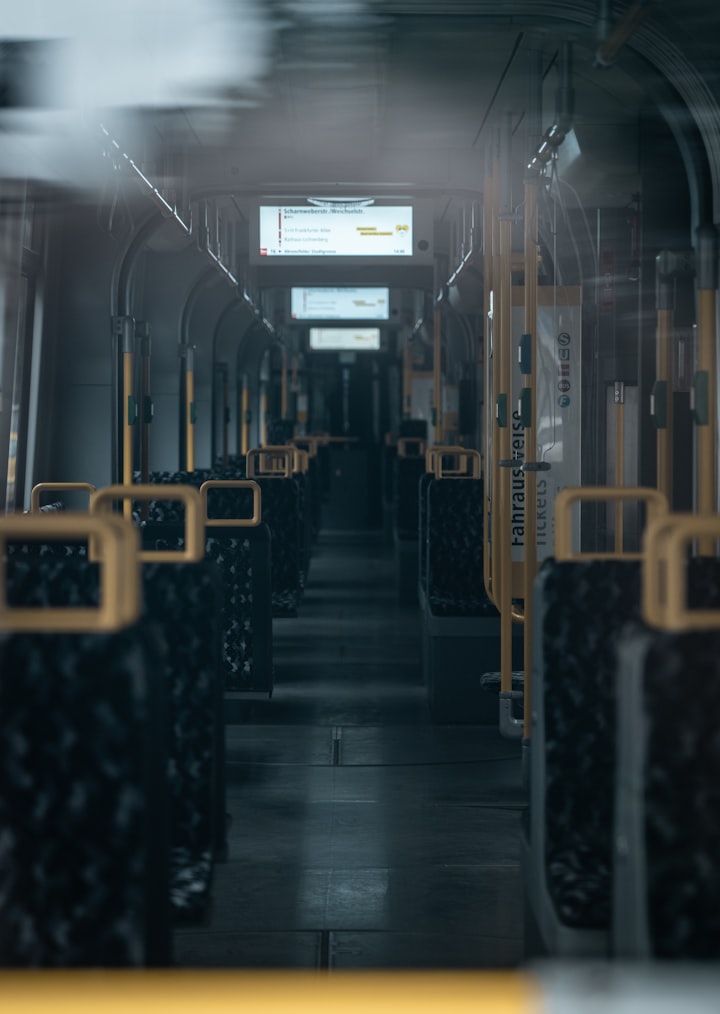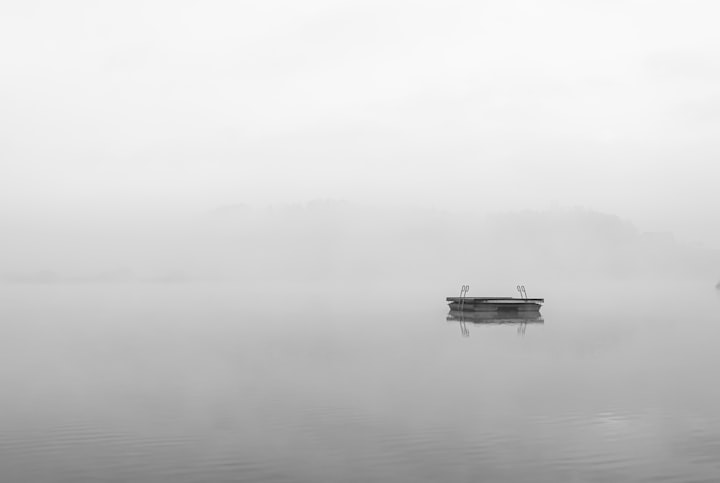
It's been nearly a year since the Pandemic started. Some countries have gotten it under control like Australia and New Zealand. Some are having a second wave that's worse than the first like the US, where I so happen to live. When I'm not writing on Vocal, I'm an "essential worker." No, not a glamorous healthcare provider, I work at DashMart, one of many convenience stores popping up across the country that are owned by DoorDash and therefore can only be shopped through the app. As the need to grocery delivery and food delivery increases due to attempts to social distance, more and more people find themselves working to one degree or another with similar mechanisms in their professional life.
However, as cool as it would be to pack people's energy drinks and cold medicine via drone from the safety of my home, that's not an option yet, so I wake up at 4 am, drive an hour to a warehouse, and keep a store running with no customers in the aisles but delivery drivers at the doors. Similarly, these delivery drivers drive all over the city going from restaurant to restaurant, home to home, providing much needed assistance that can't be done over a Zoom call.
During this time of chaos, public support of the working class men and women that keep things moving has been phenomenal, but it doesn't decrease the danger we put ourselves in to put food on not only our table but yours. Within my first few weeks here, back in September, it became clear that no matter how much I sanitized, washed my hands, wiped the tables, replaced my gloves, it was impossible to avoid exposure when coming into contact with dozens of strangers each day. There's no way to know what they've been doing in their personal life, if they where a mask when they aren't required, if they go to parties that violate the social gathering limits, if they believe the virus is a hoax. There's no way to know if their last delivery was to someone who was sick. Without an consolidated effort to track the virus the way many countries have, there's no way for me, an individual American citizen, to determine the risk the driver at the door presents in the five minutes I have to pass them their bag.
I know what you're thinking. If you wear your mask and they wear theirs, and you're 6 feet apart, you're safe, but the truth is more nuanced. You're safer than if you aren't following the guidelines, but you aren't invincible. Assuming you wear it perfectly, an N95 mask will filter out 95% of particles, so if both you and the person you are interacting with are wearing masks, there's still 2.5% of particles that you are exposing each other to that could be infectious. That's the best case scenario. Because healthcare providers are at the greatest risk, they have been given priority access to N95s (as they should), whereas as most of us are using some form of cloth face covering, which still significantly reduces risk of transmission, but not to the 2.5% of a virus grade face covering, especially if worn incorrectly. As for social distancing, data from the course of this pandemic has shown that it decreases the rate of infection by about 70-75% compared to not social distancing at all. That obviously accounts for the fact that sometimes a six foot radius isn't possible or we accidentally get closer to someone than we intend while out. If 30% of encounters that follow social distancing guidelines have a 2.5% of transmitting through both our masks there's at minimum a 7.5% chance of an infection even if essential workers like myself are doing everything perfectly. This is a low estimate since most social distancing studies are already performed in conjunction with mask mandates or guidelines, but that means out of every 100 grocery or food orders, 7 could get one or more of the people involved with the order sick.
Why does any of this matter? We probably all know or know of someone who tested positive and never had any symptoms. The problem is, we also all probably know or know of someone who died from it. This vast discrepancy in severity is part of why some people struggle to take the virus seriously, but the truth is...that's normal for any virus. Pink eye for example is highly contagious and we all probably got it a couple of times in elementary school. However, despite it's highly contagious nature and the fact that kids climb, sneeze, and slobber over everything, not everyone in the class got it. One person would come to school when they shouldn't have and maybe 5 or 6 of our classmates would get it too, but it wasn't necessarily localized to one friend group or table nor did the whole class get it. Furthermore, out of the kids who got it, sometimes their eye was just red and itchy, others would come back with horror stories of waking up with their eyes glued shut by crusty pus. If you got it multiple times, you probably had both of those outcomes. This is because different viruses and bacteria effect different immune systems, well, differently. It's normal and we expect it in every other disease impacted facet of out life. That's why you can have both a "bad cold" and a "mild cold" while both being a cold. So, why are these discrepancies so much more shocking to us with COVID-19? They really shouldn't be.
Unless you are one of the conspiracy theorists who believe this was made up to elect Biden and/or microchip everyone, none of this is likely news to you. The point in continuing to discuss it is that the more we ignore this, the worse it gets. As we continue to focus on the micro-level of how the virus is effecting our lives personally, the big picture grows dimmer. Honing in on "I'm not an 'at-risk' person and I may not even get symptoms, so I will ignore recommendations and mandates for my own comfort," is the reason our lives haven't gone back to normal, because being asymptomatic still makes you a carrier, you're recklessness can kill someone else. Besides, you could be wrong.
Like most essential employees, I eventually got it. So did my husband. He had a sore throat and some gastrointestinal discomfort for about two days, which was what you would expect for a 25-year-old man with no pre-existing conditions. I, however, was not so fortunate. I'm not asthmatic, obese, diabetic, or experiencing any other chronic health condition that would have increased my risk. I'm 21 and prior to getting sick, fit and active. I walk 30,000 steps a day as work and have been focusing on eating healthy. Statistically, I should have walked it off like the flu, but I didn't. It's been nearly a month since my recovery and I still have costochondritis (chest wall inflammation causing pain in the rib cartilage) as complication. I went to urgent care once and the ER once in the 16 days I had symptoms because they were wretched. Breathing and moving was so difficult, I had to ask my husband to escort me to the bathroom from the bedroom ten feet away so I didn't collapse against the wall. My G.I. tract was so sensitive to anything that entered it, I could only eat toast with apple butter for a week and lost 7 lbs. The ER doctor who told me about the inflammation was sympathetic to my plight because the intensity of the pain and its location from costochondritis mimics that of a heart attack, but unlike a heart attack, it sticks around for 4-6 weeks and worsens when you move or breathe. For someone with a 30,000 steps/day job, that's far from ideal. If I miss my anti-flammatory in the mornings, I am quickly reminded of what exactly ER physicians mean by a 10 on their pain scale.
My experience is not one that I tell for pity, but because if it happened to me, a healthy, fit, young adult, it could happen to anyone. The worst part of this whole situation is how preventable it would be. If "anti-maskers" set aside a selfish entitlement to trivial comfort, if socialites and influencers took a break from their parties, if we stopped eating out just because states are starting to allow it, if we just. Stayed. Home. This would be over in two weeks. Two weeks of total isolation is all it takes to ensure you and every other person is not contagious, to identify who needs treatment. We're all so focused on our freedoms this very second that we have allowed our way of life to deteriorate for 12 months.
Before I end this, I would like to make one last point. The pandemic of 1918 was deadliest on its second year when people stopped taking it seriously and were eager to return "back to normal." Even with the Spanish Flu, there were recommendations to wear a mask and those who protested it. COVID-19 may be new, but our behavior is not. Demanding normalcy when caution is necessary has not worked for any other pandemic in history, so why on earth do we think it will now? I'm sure the answer is, we don't. People just don't care. If we don't have to look into the eyes of those we killed by needlessly exposing them to a virus we were sure wouldn't affect us, why worry about them at all? Hopefully, we will come to our senses and beat this down, but as I walk around feeling 10 years older, something tells me that we won't.
About the Creator
Cici Woods
College student, writing hobbyist, and most definitely not an alien.If you would be interested in giving me more verbose feedback on my writing than what the platform currently allows, please do so here: https://forms.gle/fCY5pZK7iuLb8Pbb9






Comments
There are no comments for this story
Be the first to respond and start the conversation.